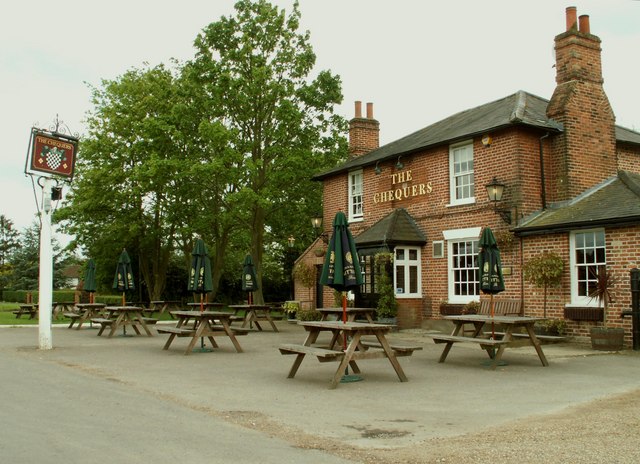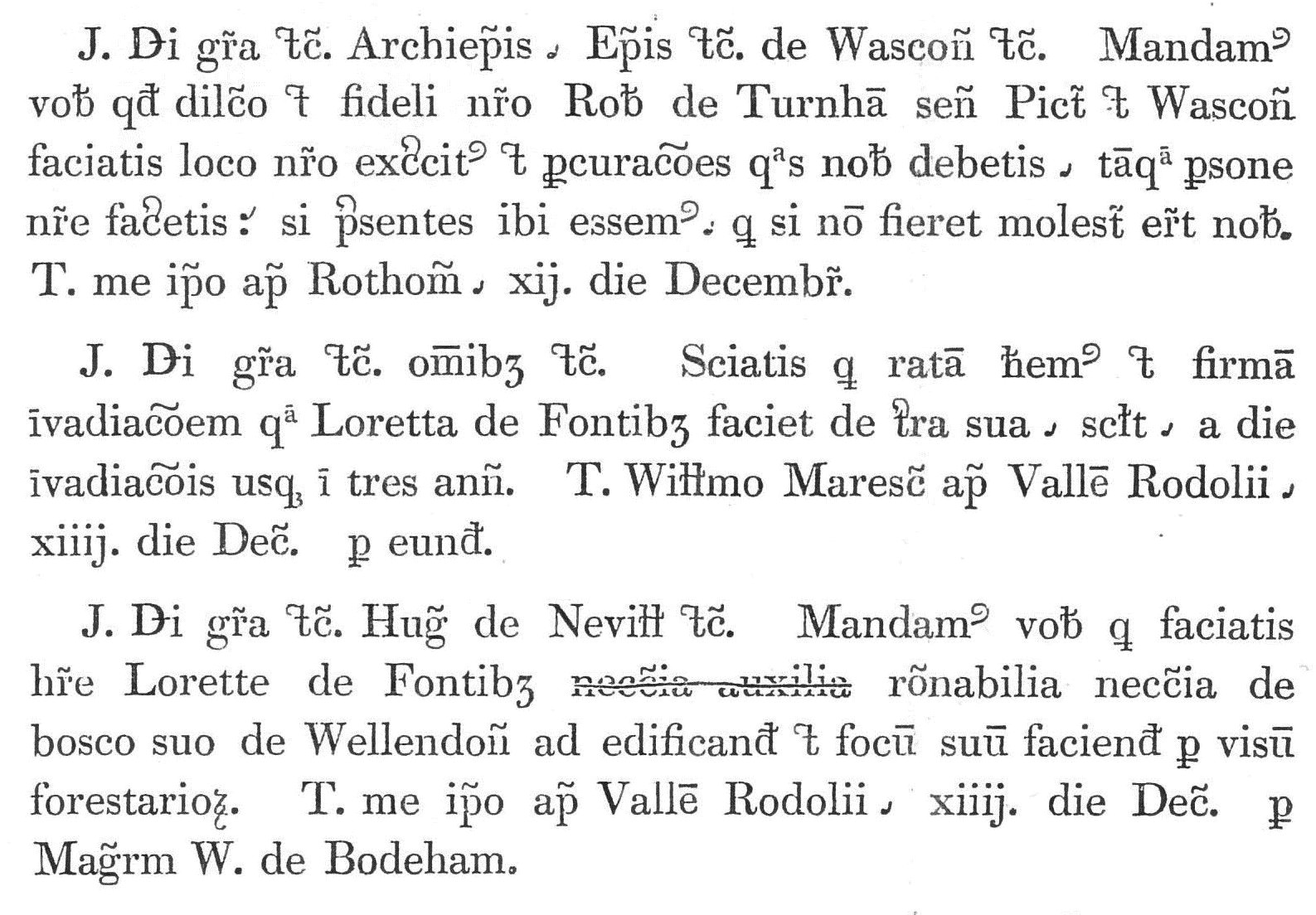|
Matching, Essex
Matching is a village and civil parish in the Epping Forest district of Essex, England centred in countryside east of Harlow's modern town centre and from Old Harlow/Harlow Mills area of the town. The terrain is elevated and London is centred to the south-west. History Etymology Matching's name is of Saxon origin, derived from the people or tribe of Maecca (Match) who settled in an open area of pasture called an "Ing", hence 'Matching'. In the ''Domesday Book'' (1086) it was called Matcinga. Medieval Period All its Domesday manors were fertile but small and poor – the three small manors held by the Abbey of St Valery, Geoffrey de Mandeville, and Ralph de Tony each had a single ploughteam in 1066. Matching from the mid-medieval period had four manor houses, which now stand on or near their medieval sites. Matching Hall is one of the four and one of three Grade II* architecture buildings in the old village centre, which is dominated by the church and is a cul-de-sac also ... [...More Info...] [...Related Items...] OR: [Wikipedia] [Google] [Baidu] |
Epping Forest (district)
Epping Forest is a local government district in Essex, England. Situated in the west of the county, bordering northeastern Greater London, it is named after, and contains a large part of, Epping Forest. The district, though wholly within the county of Essex, is partly contiguous with Greater London to the south and southwest, and the area around Buckhurst Hill, Chigwell, Waltham Abbey and Loughton is statistically part of the Greater London Built-up Area and forms part of the Ilford (IG) postcode area (except for Waltham Abbey, which forms part of the Enfield (EN) postcode area and Sewardstone, which forms part of the Eastern (E) postcode area). Epping Forest District also borders Hertfordshire both to the northeast and southwest of the neighbouring district of Harlow. Settlement The whole district is divided into civil parishes a majority of which, particularly in the north and east of the district are rural and sparsely populated for an area so close to London; it includes ... [...More Info...] [...Related Items...] OR: [Wikipedia] [Google] [Baidu] |
Abbess Roding
Abbess Roding is a village in the civil parish of Abbess, Beauchamp and Berners Roding and the Epping Forest District of Essex, England. The village is included in the eight hamlets and villages called The Rodings. It is in west Essex, north from Chipping Ongar, and west from the county town of Chelmsford. History According to ''A Dictionary of British Place Names'', Roding derives from "Rodinges", as is listed in the ''Domesday Book'' and recorded earlier as such at c.1050, with the later variation 'Roinges Abbatisse' recorded in 1237. The 'Abbess' refers to the manorial possession by a man called 'Aitrop' held under the ownership of the Abbess of Barking Abbey. In the ''Domesday'' account Abbess Roding is listed as in the Hundred of Ongar. The manor held 18 households, seven villagers, two smallholders, five slaves, and one freeman, with 2 lord's plough teams, 3.5 men's plough teams, of meadow, and a woodland with 20 pigs. In 1066 there were 10 cattle, 40 pigs, 100 shee ... [...More Info...] [...Related Items...] OR: [Wikipedia] [Google] [Baidu] |
Curate
A curate () is a person who is invested with the ''care'' or ''cure'' (''cura'') ''of souls'' of a parish. In this sense, "curate" means a parish priest; but in English-speaking countries the term ''curate'' is commonly used to describe clergy who are assistants to the parish priest. The duties or office of a curate are called a curacy. Etymology and other terms The term is derived from the Latin ''curatus'' (compare Curator). In other languages, derivations from ''curatus'' may be used differently. In French, the ''curé'' is the chief priest (assisted by a ''vicaire'') of a parish, as is the Italian ''curato'', the Spanish ''cura'', and the Filipino term ''kura paróko'' (which almost always refers to the parish priest), which is derived from Spanish. Catholic Church In the Catholic Church, the English word "curate" is used for a priest assigned to a parish in a position subordinate to that of the parish priest. The parish priest (or often, in the United States, the "pastor ... [...More Info...] [...Related Items...] OR: [Wikipedia] [Google] [Baidu] |
John Morgan (poet)
John Morgan (also known as John Morgan Matchin or John Morgan of Matchin) (7 February 1688 – 28 February 1733 or 1734) was a Welsh clergyman, scholar and poet. Life Morgan was born at Llangelynnin, Merionethshire, the younger son of the local curate. He studied at Jesus College, Oxford, from 1704 to 1708, and is thought to have been influenced by Edward Lhuyd, the antiquary, whilst he was there. He was ordained in 1709 and spent a year as curate of Llandegfan, Anglesey. From 1710 to 1713, he was curate of Llanfyllin, Montgomeryshire, before becoming curate (1713) and then vicar (1728) of Matching, Essex, a position he held until his death in February 1733 or 1734. This led to his commonly being known as John Morgan Matchin. He was buried in the parish church in Matching. Work Morgan had a particular interest in Welsh literature, and was one of the "London Welsh", a group intent on preserving and promoting Welsh culture in the capital, from around the time of his appo ... [...More Info...] [...Related Items...] OR: [Wikipedia] [Google] [Baidu] |
Wales
Wales ( cy, Cymru ) is a Countries of the United Kingdom, country that is part of the United Kingdom. It is bordered by England to the Wales–England border, east, the Irish Sea to the north and west, the Celtic Sea to the south west and the Bristol Channel to the south. It had a population in 2021 of 3,107,500 and has a total area of . Wales has over of coastline and is largely mountainous with its higher peaks in the north and central areas, including Snowdon (), its highest summit. The country lies within the Temperateness, north temperate zone and has a changeable, maritime climate. The capital and largest city is Cardiff. Welsh national identity emerged among the Celtic Britons after the Roman withdrawal from Britain in the 5th century, and Wales was formed as a Kingdom of Wales, kingdom under Gruffydd ap Llywelyn in 1055. Wales is regarded as one of the Celtic nations. The Conquest of Wales by Edward I, conquest of Wales by Edward I of England was completed by 1283, th ... [...More Info...] [...Related Items...] OR: [Wikipedia] [Google] [Baidu] |
Epping, Essex
Epping is a market town and civil parish in the Epping Forest district of the County of Essex, England. The town is northeast from the centre of London, is surrounded by the northern end of Epping Forest, and on a ridge of land between the River Roding and River Lea valleys. Epping is the terminus for London Underground's Central line. The town has a number of historic Grade I and II and Grade III listed buildings. The weekly market, which dates to 1253, is held each Monday. In 2001 the parish had a population of 11,047 which increased to 11,461 at the 2011 Census. Epping became twinned with the German town of Eppingen in north-west Baden-Württemberg in 1981. History "Epinga", a small community of a few scattered farms and a chapel on the edge of the forest, is mentioned in the ''Domesday Book'' of 1086. However, the settlement referred to is known today as Epping Upland. It is not known for certain when the present-day Epping was first settled. By the mid-12th century a ... [...More Info...] [...Related Items...] OR: [Wikipedia] [Google] [Baidu] |
Poor Relief
In English and British history, poor relief refers to government and ecclesiastical action to relieve poverty. Over the centuries, various authorities have needed to decide whose poverty deserves relief and also who should bear the cost of helping the poor. Alongside ever-changing attitudes towards poverty, many methods have been attempted to answer these questions. Since the early 16th century legislation on poverty enacted by the English Parliament The Parliament of England was the legislature of the Kingdom of England from the 13th century until 1707 when it was replaced by the Parliament of Great Britain. Parliament evolved from the great council of bishops and peers that advised t ..., poor relief has developed from being little more than a systematic means of punishment into a complex system of government-funded support and protection, especially following the creation in the 1940s of the welfare state. Tudor era In the late 15th century, parliament took actio ... [...More Info...] [...Related Items...] OR: [Wikipedia] [Google] [Baidu] |
Hatfield Heath
Hatfield Heath is a village, civil parish, and an electoral ward in the Uttlesford district of Essex, England, and at its west is close to the border with Hertfordshire. In close proximity are the towns of Bishop's Stortford and Sawbridgeworth. Stansted Airport is approximately to the north. History The neighbouring Hatfield Broad Oak was a market town which shrank to a large village. As it declined Hatfield Heath, then in the parish of Hatfield Broad Oak, grew because of its proximity to main roads through the parish. In 1660 the fair at Hatfield Broad Oak was moved to Hatfield Heath. By the third quarter of the 18th-century the heath (today's village green), had cottages around its edge, and by the 19th century two schools, a church and a brewery."Hatfield Broad Oak" |
Down Hall
Down Hall is a Victorian country house and estate near Hatfield Heath in the English county of Essex, close to its border with Hertfordshire. It is surrounded by of woodland, parkland and landscaped gardens, some of which is protected by the Essex Wildlife Trust. History The first Down Hall was a Tudor house, once owned by poet Matthew Prior. Prior was acquainted with landscaper Charles Bridgeman, who he commissioned to landscape the estate's gardens. After Prior's death in 1721 (just one year after buying the property), the house was passed to his friend Edward Harley, 2nd Earl of Oxford and Earl Mortimer, who undertook further rebuilding. Twenty years later, and with the house still unfinished, Harley died. Selwin family Upon Harley's death in 1741, the house was purchased by William Selwin, a wealthy silk merchant, for £4500. The estate remained in the Selwin family until 1902, where – on the death of Henry Selwin-Ibbetson, 1st Baron Rookwood (who had commi ... [...More Info...] [...Related Items...] OR: [Wikipedia] [Google] [Baidu] |
Patent Rolls
The patent rolls (Latin: ''Rotuli litterarum patentium'') are a series of administrative records compiled in the English, British and United Kingdom Chancery, running from 1201 to the present day. Description The patent rolls comprise a register of the letters patent issued by the Crown, and sealed "open" with the Great Seal pendent, expressing the sovereign's will on a wide range of matters of public interest, including – but not restricted to – grants of official positions, lands, commissions, privileges and pardons, issued both to individuals and to corporations. The rolls were started in the reign of King John, under the Chancellorship of Hubert Walter. The texts of letters patent were copied onto sheets of parchment, which were stitched together (head-to-tail) into long rolls to form a roll for each year. As the volume of business grew, it became necessary to compile more than one roll for each year. The most solemn grants of lands and privileges were issued, not as l ... [...More Info...] [...Related Items...] OR: [Wikipedia] [Google] [Baidu] |

.jpg)





